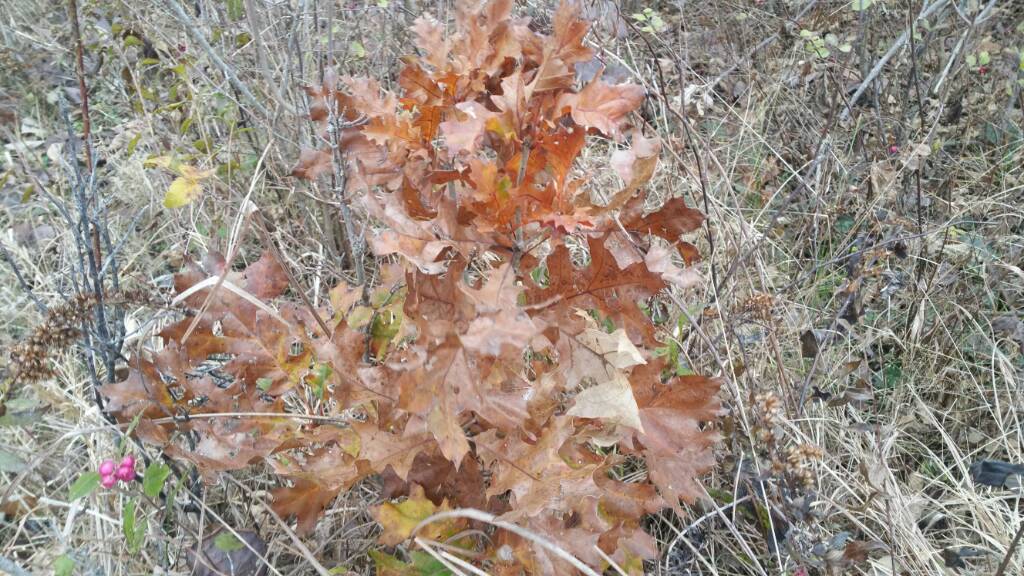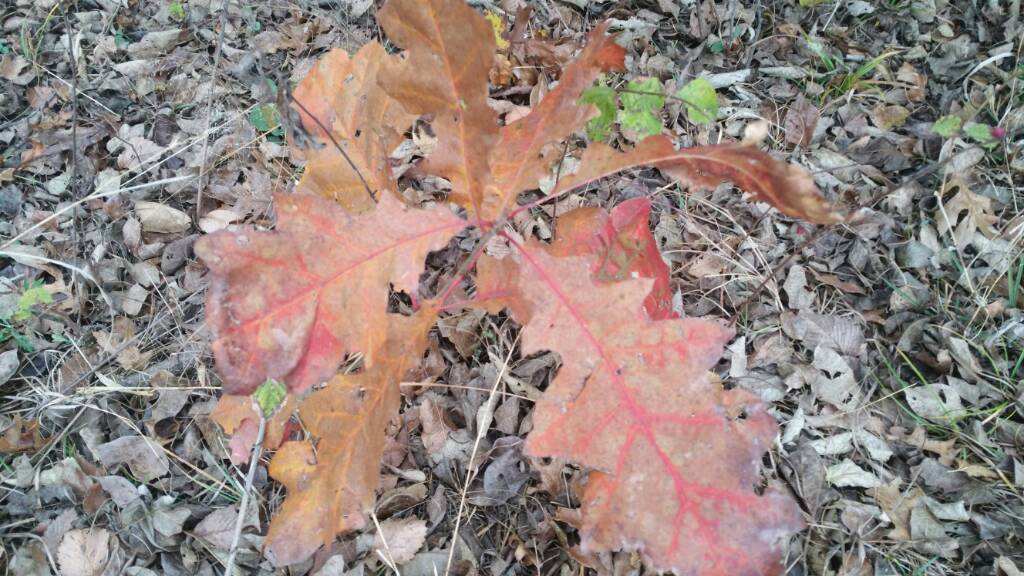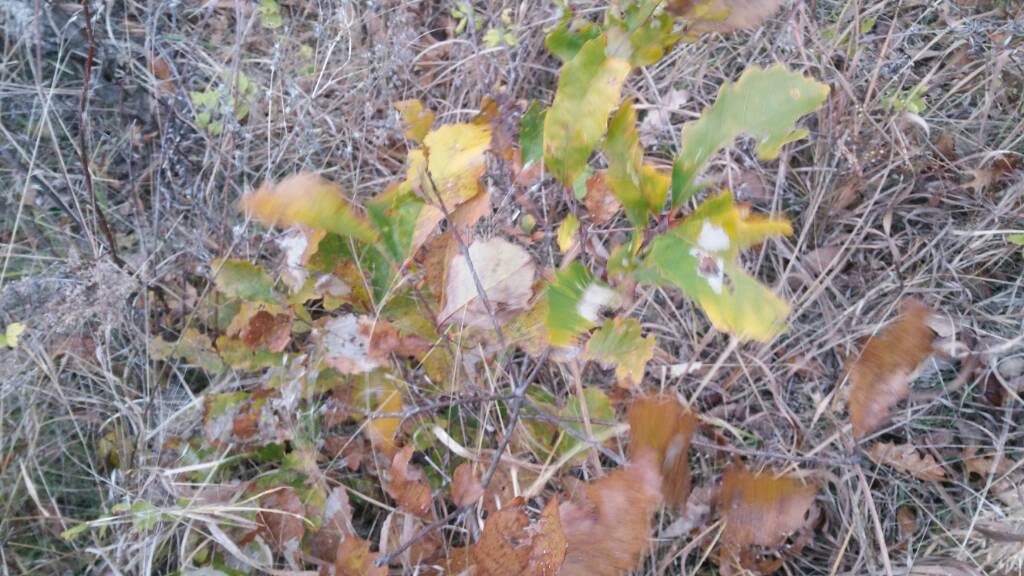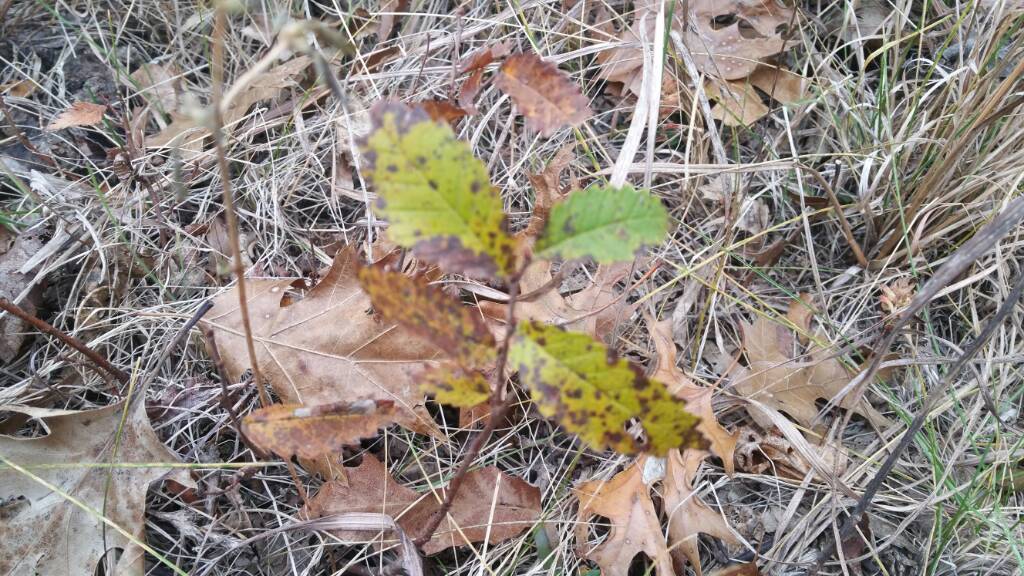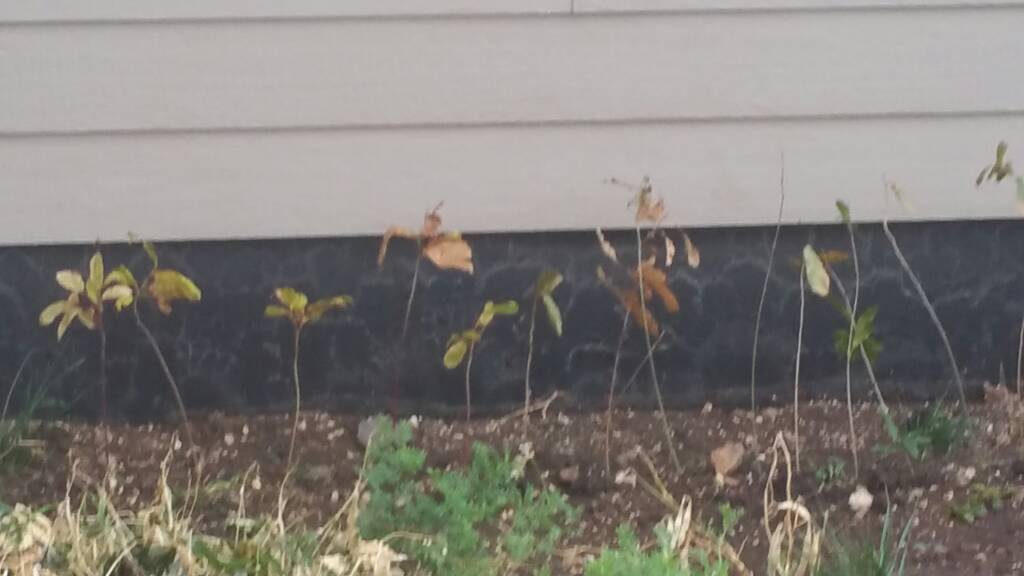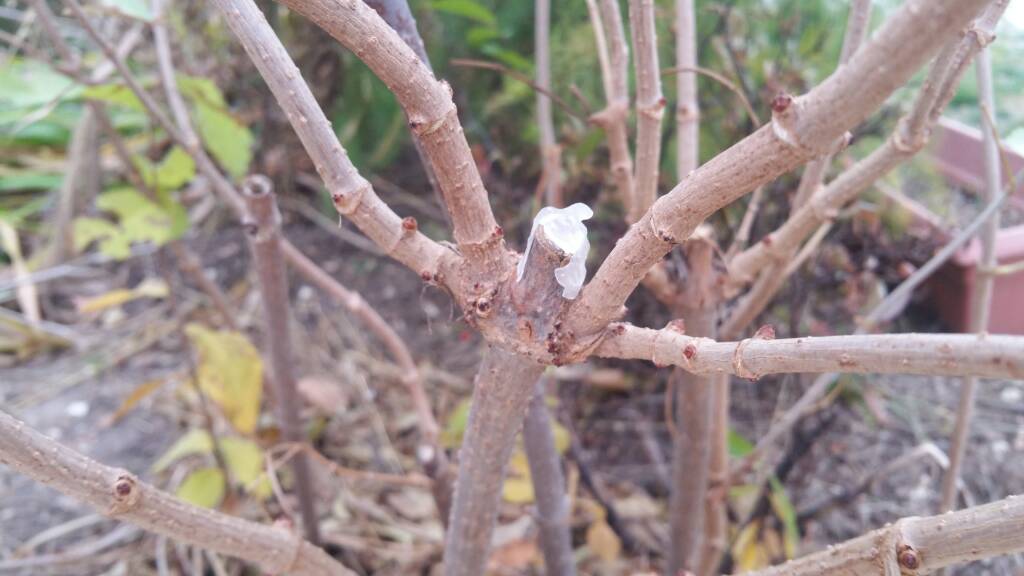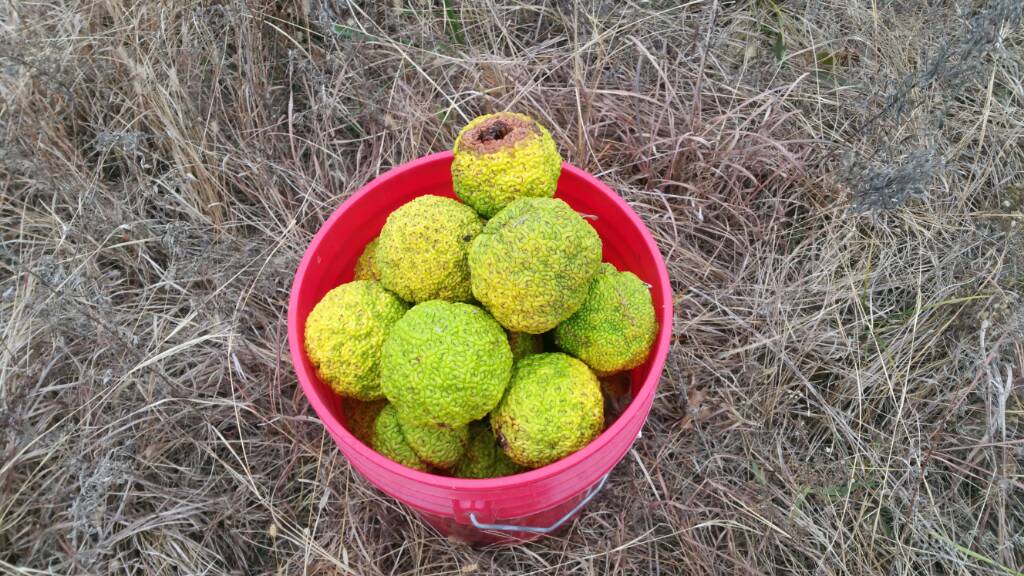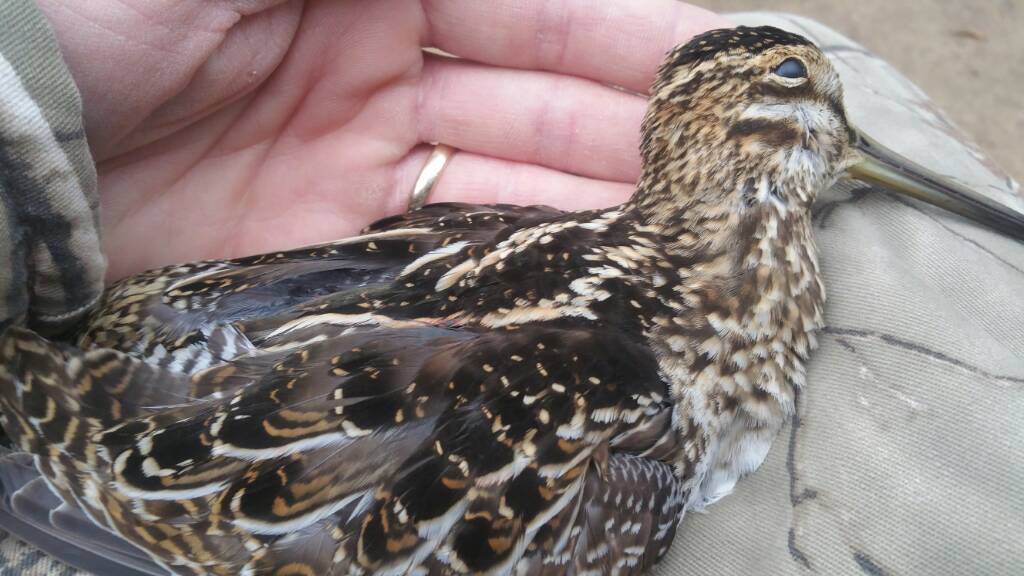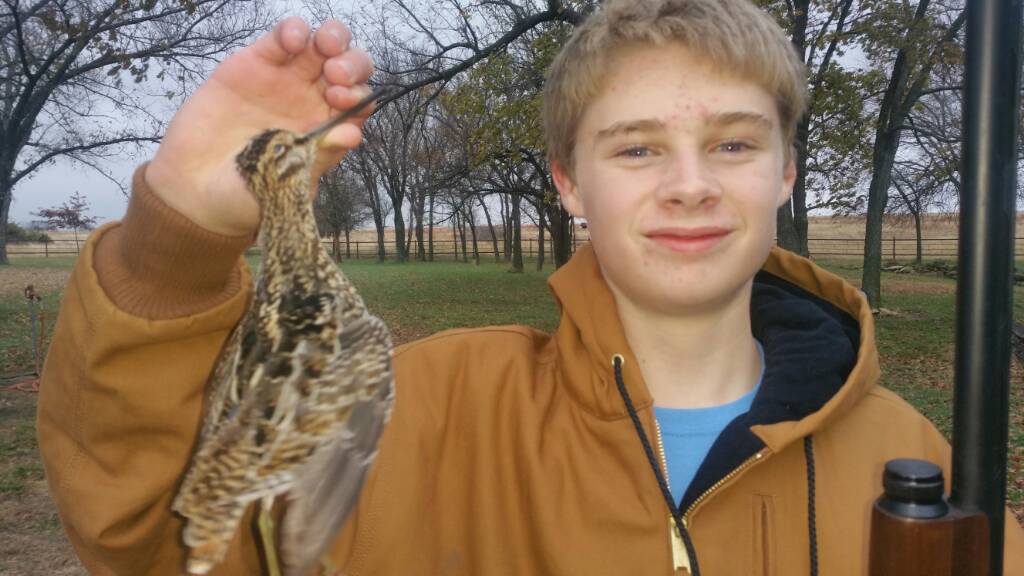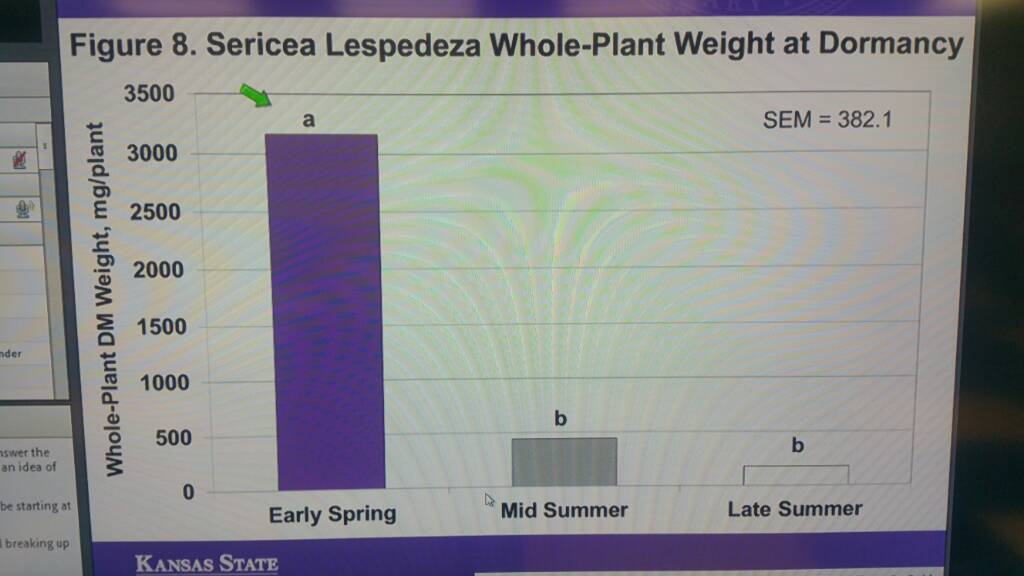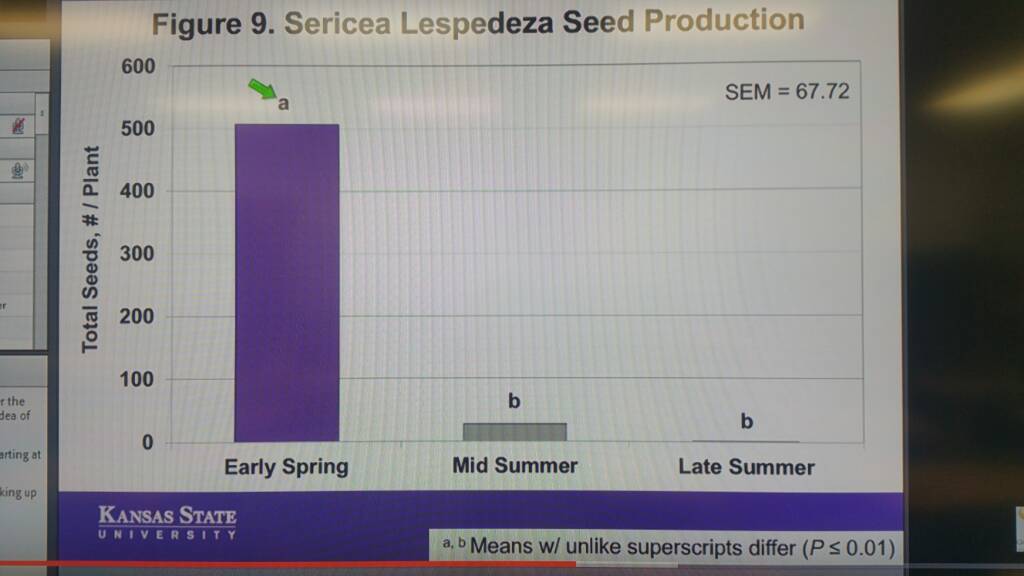For one.....you will not control that plant.....two, suppression is a reasonable goal.....and three, why worry as you have livestock to impact the plant community?
Yes, late winter/spring fire promotes serecia germination...well documented...as are use of the follow up herbicides for suppression! Counter intuitive reasoning says that elimination of fire and herbicide will suppress serecia.....is that a true statement? No...of course not. Thus, there must be other issues leading to serecia dominance over the long term.
With planned grazing for the last 4 months serecia biomass here is about that of summer fire in the graph (ie a behaved low stature member of the plant community used by cattle before eating fescue or other tame grasses).
Deer here also use that plant until frost knocks off all leaves. I’ve been watching a ditch repair I’d did back in mid-summer…..that really set the plants back to a vegetative state for fall….80% of deer leaving the bedding area each evening would hit the serecia regrowth….about a third would make a hit on it in the AM while returning to bed…don’t know about night as no cam to monitor that. It is a good source of protein and tannins for the animal. They use tannins to remediate toxins of other plants but are limited in the amount of tannins they can metabolize which limits protein intake from the plant. It is a long day warm season legume also….most other warm season broadleafs (including striate lespedeza) have lost their nutritional value/biomass well before first frost here or other long day plants which remain are of low animal preference in general (eg western ragweed).
My point is to start looking at the whole plant picture and management on a property especially the plants you want to promote….not just one dominant low preference plant deemed 'invasive'! What is the main goal of most prescribed fires in the flint hills?....to remove decadent biomass of uneaten and untrampled plants from the prior year to promote a landscape of mainly lush vegetation for high animal gains under set stock grazing…..that goal is too heavily weighted on economics and too little on plant community dynamics. So naturally that annual management repeated the same over time will promote unwanted plants over the long term (serecia, western ragweed, brush, ERC etc). Late weaning and yearling calves are the most selective eaters of all cattle age classes......they repeatedly eat the best and leave the rest given the opportunity....and that will give you a weed issue every year when they leave! The day before I moved the herd last weekend, 8 of the weaning aged calves walked an electric cattle guard to gain access to fresh green forage ahead of the main herd as the main herd was down to stockpiled dormant Bermuda with slight amounts of green....I did nothing....it is just natural selection behavior for them and boosts performance.....the penalty for doing that is no access to water forcing them to again cross the electric fence to visit momma...repeated long enough and they will wean themselves from their mother....that is off-track a bit but I just want to stress how selective growing cattle are by nature and the long term ramifications selective grazing.
Serecia dominance is a byproduct of non-use of existing plants, inadequate thatch cover of soil, and/or non-uniform impact of the landscape (ie season long set cattle stocking). It thrives due to over-rest and lack of disturbance on properties with no livestock and on areas of working lands too far from water for stock to graze/trample properly under set stocking. Their fire study does not report high density grazing effects…just fire, one tool of the whole. Bring in the cow herd during the growing season should you have an outbreak to weaken the plant! On the other hand you may need a summer fire to bring serecia numbers down to a manageable level on infested ground before grazing to promote greater plant diversity. More than one tool is needed...IMO!
Notice in this K-state video that western ragweed is also present on the range land…yet there is no discussion of cattle avoidance of that plant? Like serecia, it is another symptomatic low preference indicator plant of a bigger problem (ie low stock density leading to too much animal selectivity). Broomshedge is another indicator of the same problem (selective grazing) as are many ‘pasture weeds’.
https://www.youtube.com/watch?v=l5d_jRHaSyE
In recent years K-state has been looking into increased density cattle grazing and dual specie grazing to suppress serecia. The results on seed production are very favorable! However, an 8 paddock rotation with a 50 day minimum warm season grass recovery for good stocker cattle performance requires a 7 day stay in each pasture. Forage quality will dive hard over the last of those 7 days, thus animal intake and performance will yo-yo. Further, there are long term ramifications on the plant community by grazing rangeland before it has fully recovered…..same way same time year after year…Mother Nature will figure that out! Triple the number of paddocks in that study and reduce grazing stay to 3 days…..the need for fire and perhaps sheep may become unnecessary…..because you have impacted all of the plants more equally and provided longer recovery (70d) for warm season grass recovery…..animal intake and performace will be good on a 3 day stay and higher on 1 day stay.
https://www.youtube.com/watch?v=7vk1vesUH0E
They are thinking outside the box which is a good thing! When invasive plants are suppressed by grazing in one growing season and enter the next growing season weakened while desirable plants (NWSG) have been allowed full recovery, what plant community will you be promoting? Has the need for fire and/or herbicide not been reduced or eliminated? Is that not economically advantageous?
